
Whatever happened to the avant-garde? If, at least from the 1960s and onward, the avant-garde has been the site of intense artistic, political and scholarly struggles about art’s relation to life, new technologies, social movements and transformative politics, the concept has seemingly disappeared from the discourse around contemporary art. At the same time, the past decade has seen a proliferation of research networks devoted to historiographical avant-garde studies, with new nodes emerging as we speak. If the word “central” still has any meaning under such networked conditions, Tania Ørum would surely qualify for the designation, at least in a Nordic context. It’s been ten years since she, together with Marianne Ping Huang, founded the Danish research network “The Return and Actuality of the Avant-Gardes,” which soon evolved into The Nordic Network of Avant-Garde Studies. More recently, the European Network for Avant-Garde and Modernism Studies (EAM) was established. In 2009 Ørum, Associate Professor at the Department for Cultural Studies and the Arts at the University of Copenhagen, published her tour de force tome on the Danish Sixties, De eksperimenterende tressere: Kunst i en opbrudstid (The Experimental Sixties: Art in Times of Upheaval). This spring will see the launch of an even bigger publishing venture, A Cultural History of the Avant- Garde in the Nordic Countries. With Ørum and Ping Huang as the head editors, four volumes will be published by Rodopi over a period of two years. The first installment covers the period 1900–1925 and includes more than 30 articles on topics ranging from the movie star Asta Nielsen as an icon for the avant-gardes to Les Ballets Suédois, Nordic periodicals, and a general rethinking of the avant-garde’s relation to the market.
Concept, network, archive

Ellef Prestsæter (EP): The first thing that struck me when looking at the outline of the project was the quartering of the century into blocks of 25 years: 1900–1925, 1925–1950, 1950–1975, and 1975–2000. I wondered whether your seemingly neutral set-up in fact carries a polemical argument of its own. We’re used to thinking about the avant-garde as something exceptional, with strict delimitations temporally and/or spatially. Take the work of Peter Bürger, whose Theory of the Avant- Garde (1974) remains influential despite all the criticisms that have been leveled against it over the years. Bürger famously argued that the historical avant-garde (referring mainly to Dada and Surrealism) was marked by the failed attempt to revolutionize life as a whole by dissolving art into social life, and notoriously added that the post-war neo-avant-garde amounted to little more than a futile repetition of previous gestures. You, on the other hand, in addition to claiming a position for the Nordic avant-garde, also seem to spread the avant-garde evenly throughout the century, so to speak. Is this a provocation against certain narrower definitions of what constitutes an avant-garde?
Tania Ørum (TØ): That might be part of it. If the quartering is not polemical in itself, I do believe it’s controversial to claim avant-garde movements existed in the Nordic countries prior to 1950. Anyway, from the 21st century we can now look back at the avant-garde movements of the 20th century as a long tradition, admittedly a tradition of ruptures and disagreements as much as of common spirit, but nevertheless a European tradition. Much more material has been uncovered and made accessible about the early avant-garde movements than was available in the 1960s and 1970s when Bürger wrote his book. So at this point in history it makes no sense to distinguish between a true or historical avant-garde and a neo-avant-garde. The early movements such as Futurism and Dada clearly belong in the same historical tradition as the avant-garde movements of the 1960s. To cut the Cultural History of the Nordic Avant-Garde into four equal parts seemed a neat division, and in fact it does make quite good sense in historical terms as well. After the lively avant-garde years around the First World War, the political climate changes in the late 1920s and early 1930s, and there are technological changes that bring film into focus as an important art form. Including the whole period from 1925 until 1950 in the second volume allows us, amongst other things, to show how the Cobra movement spanned the disruption of the Second World War. The postwar avant-garde goes on until the middle of the 1970s. After that there is a new situation, and it seems that the avant-garde tradition had to be rediscovered in the 1990s.
EP: What then is an avant-garde?

TØ: We’ve stayed with the idea of an open field all the way. This is not a doctrinaire avant-garde history in the sense that we take, say, Bürger’s theory as our point of departure. That, I think, would be very old-fashioned. When you look at the “classical” avant-garde movements in any historical detail, it is obvious that although they do share certain features, they are also very heterogeneous. There is no way you could talk of the avant-garde, either in purely stylistic or political terms.
So instead of striving for one unitary definition, we have adopted the view of the Dutch Dada scholar Hubert van den Berg, who is one of the editors of the first two volumes, and who has suggested that one should see the avant-garde as a network or rhizomatic structure. Avant-garde movements and groups felt that they were part of a common endeavor. In avant-garde magazines, for instance, the various groups conspicuously linked to each other, even if they simultaneously disagreed with each other – that polemical disagreement is also characteristic of the avant-garde movements of course.
EP: In a recent special issue of New Literary History titled “What is an Avant-Garde?”, Bürger finds fault with those of his critics who merely tested his theoretical constructions (such as his concept of the avant-garde) against empirical history. Against those who say, “Look here, your definition doesn’t cover this or that phenomenon,” Bürger claims that this is simply how generalizing, theoretical concepts work.
TØ: That is of course true to a certain extent, but even general theoretical concepts have to cover more than a few instances in order to be useful. Bürger’s concept of the avant-garde is certainly too narrow and selective. He leaves out the first and possibly the most important avant-garde movements: the Italian Futurists and the Russian Futurists and Constructivists. Including them would have complicated his notion of the avant-garde considerably. Furthermore, Bürger’s conception is heavily colored by the historical situation of the early 1970s when he wrote the book. I would say that the concept of an avant-garde that failed in its attempt to bring about a revolution has more to do with the failure of the so-called “‘68 movement” and the disappointment felt by people who had participated in the upheavals of the Sixties and had hoped for a complete transformation of Western societies. This is why Bürger’s definition of the avant-garde is quite useful in relation to, for instance, the activities of the Danish avant-garde group The Experimental School of Art, precisely because they shared that historical context.

We want to keep the concept of the avant-garde fairly sharp, to maintain a distinction between modernism as the wider current and the avant-garde as something more radical, and thus not include everything we like under the heading of avant-garde. However, Nordic avant-garde art is not always very radical, and especially in the early periods, Nordic artists sometimes had a very eclectic approach to the styles and ideologies of the centers. In the first volume we wanted to include both the (rather few) radical and revolutionary movements, which may compare to Bürger’s vision of the historical avant-garde, and the more eclectic and timid versions of styles, politics and ideologies, which are still recognizable as being related to the international avant-garde network.
EP: The network figure seems to appear on three different levels here: historically, with the avant-gardes’ network structure; conceptually, as your central figure or generalizing concept; and it’s also the case that your project grew out of a research community that defines itself as a network: The Nordic Network of Avant-Garde Studies. What came first, the research network or the idea/discovery that the avant-garde itself is a network?
TØ: The research network came first. It all started in the late 1990s with my project on the cross-aesthetic avant-garde movement in Denmark in the 1960s. No one in my department was interested, and I really needed someone to discuss things with. So we created this network – at first a Danish one, which worked enormously well – and instantly people from Sweden, Iceland and Norway wanted to join forces.
EP: The structural coincidence between your organizational model as research community and the object to be studied, is it …
TØ: You may of course consider this from a Foucauldian perspective and say that ‘the network’ is a kind of ruling metaphor these days.
EP: Much like ‘the archive’?
TØ: Yes, and all this of course also has to do with people starting to go through the archives. In fact, we hope at some point to be able to create a NUBUweb, a digitized archive of Nordic avant-garde material, such as the little magazines that are crucial meeting places and expressions of the avant-garde currents, but which can be very difficult to get a hold of. Or the artists’ books that you are never allowed to touch in the museums. That would make it a whole lot easier for scholars to access and discover exactly what’s there.
The Nordic, cultural history, implications
EP: What have been the main discoveries of the project so far?

TØ: In the first period, the Nordic countries were already thoroughly established in the international cultural arena with what is called “the modern breakthrough,” which made a giant splash all over Europe. People knew Georg Brandes, Henrik Ibsen, and August Strindberg, all of whom actually had sort of avant-garde reputations. In London, for instance, Ibsen was performed and understood as a revolutionary all the way up until World War II. This created a launching pad for what occurred during the first part of the 20th century, a carrier wave that took Nordic artists to Europe. Still, not much happened in those first years. Artists went to Paris or Berlin, seeking out the avant-garde movements. Some entered Matisse’s school or found their way to the Sturm Gallery, and you can see how it changed the way they painted and thought. However, once they returned home to the Nordic countries, it was clearly difficult for the artists of this early period to sustain the new impulses: the more advanced styles or the whole new conception of art associated with the European avant-gardes. An exception occurred during World War I, when Copenhagen became an important hub. Geographically located outside of the war, the city attracted a lot of artists and art dealers, thus giving the Nordic avant-garde milieu a real boost.

Sweden had that great modernist exhibition, The Stockholm Exhibition, as early as 1930. Arguably, the avant-garde made an important contribution to the modernization of the Nordic societies, with Sweden as the driving force. From the period covered in our second volume, the avant-garde – with the whole Bauhaus tradition in a Nordic variant – becomes a central part of what it means to be Nordic. Also important here is of course the colonial history of the Nordic countries and their post-colonial relations. Even though it changes in character over the century, there is very much a living connection between them. With the post-war period, the American story comes to dominate the picture (and this is perhaps what has happened with this history more generally). In the Nordic countries, we have not understood these Nordic movements as avant-garde. They have not been researched and analyzed, whereas internationally a whole lot has been written about avant-garde movements. Take the Danish Sixties – until I published my book on the subject in 2009, no one had written about it. So people could only read the American stuff and this lead to the supposition that the avant-garde was something we merely imported: everything allegedly originates in the United States and has its offshoots here. We have wanted to revise this history and to show that there was a much more lively interaction amongst the Nordic countries, the rest of Europe and the US. Some things actually started here. Coming from the periphery, Nordic artists of course knew about the things that went on in the centers, but they often had rather eccentric local perspectives on international trends. Internationalization was not as advanced in the 1960s as today. Flights were expensive; the US was still far away; and the international magazines carried mostly black-and-white, and often rather small, photos of exhibitions and artworks. You could not watch international TV and hardly ever listen to international radio. So even though Europeans and Americans have significant upheavals in common, the political, youth cultural and artistic movements still have a distinctive local character.
EP: Are you saying that parts of the avant-garde movement actually originated in the Nordic countries?

TØ: Well, Öyvind Fahlström invented concrete poetry as early as 1953. And concrete poetry in Swe-den was a very distinct thing, unlike concrete poetry anywhere else, even though there was a very lively international network of concrete poetry.
My study of the avant-garde of the Danish Sixties also shows that the interest in a German artist like Joseph Beuys or an American artist like Robert Smithson was prompted mainly by the experimental practice of the Danish artists themselves. So it is not that the Danish artists studied American trends that they then tried to copy; Danish artists looked abroad for artists who seemed to be working along similar lines as themselves. It is in this spirit that concrete poets in Denmark rediscovered historical predecessors like Dadaism, or budding Danish conceptual artists discovered Robert Smithson, who had barely been published in the US when translations of some of his essays were printed in the little magazine ta’, the trumpet of the Danish Experimental School of Art.
EP: You were also personally associated with this Avant-Garde group, how has that informed your research?
TØ: Yes, I belonged to the family circle around the Experimental School of Art in the 1960s and sometimes participated in readings etc. This familiarity has provided invaluable first-hand knowledge and access to central persons in the 1960s avant-garde and has, of course, coloured my perspective. But there is also a historical distance and a professional approach dividing me from my youthful experience of the avant-garde of the 1960s.
EP: Let’s return to the idea of networks. How does it inform your conception of the Nordic avant-garde?

TØ: In a Nordic context, it is actually only when you see the networks that you discover the avant-garde, at least in the early period. The people that were radical in one way or another did not seem to fit into the mainstream of the national traditions in the Nordic countries. They were looked upon as odd, isolated individuals, because the very narrow national research tradition prevalent in the Nordic countries did not link them to the international movements. As soon as you focus on the artistic networks they were part of, their work begins to make sense. Avant-garde studies are in that sense born transnational. The Nordic perspective allows us to see much more than separate national outlooks do.
EP: Could you describe some of these networks and how they changed over the course of the century?
TØ: During the early part of the 20th century, Nordic artists formed colonies in Paris, Berlin or Munich. There were large groups of Nordic artists at the Académie Matisse in Paris for instance. They often did not speak foreign languages very well, and as young and unknown artists they found it difficult to gain access to the important meeting places and private collections of the international avant-garde. Through other more influential or well-connected Nordic artists, however, they might be admitted to art dealers or private collectors where one could see, for instance, early cubist painting before the First World War. Although we now assume that this is when cubism started, it was not on show in Paris at the time. Some artists, largely through private connections, entered international groups, but once they lost their relation to their national artists’ networks, it was very difficult to return home and be accepted. The Danish painter Franciska Clausen was a founding member of the Cercle et Carré group, but was kept out by her contemporary male artists when she returned home in 1931 and was not recognized in Denmark until the 1950s.
In the postwar period networking across national borders was much easier. Several artists from Denmark and Sweden joined transnational artists’ groups like the Situationists, Fluxus and concrete poetry. Artists like Fahlström and the Icelander Steina Vasulka moved to New York and were integrated in international groups abroad, while foreign artists moving to Nordic countries brought their international networks with them: two examples are the German artists Arthur Köpcke in Copenhagen and Dieter Roth in Iceland. And within the Nordic countries there was a lot of temporary or long-term cooperation among poets, composers and visual artists.

The cultural policy in the Scandinavian countries after World War II no doubt helped bring their institutions and artists to the international scene. Notably Moderna Museet gained both a local and an international reputation as an avant-garde institution by importing American artists in the early 1960s, when America had not yet established itself as the new art center. Moderna Museet and other Nordic museums drew on the self-organized artists’ networks for their exhibitions. And the museum exhibitions and the networks of museums and art dealers also helped establish and sustain collaborative networks of artists. On their way to Stockholm in 1961, members of the Nouveaux Réalisme group stopped over in Copenhagen to have low-key and unpaid exhibitions at Arthur Köpcke’s small gallery. Köpcke’s very modest gallery and very extensive networking also paved the way for the early Fluxus concert in Copenhagen in 1962, which left a long trail of collaborative activities behind it, connecting Nordic artists, writers and composers with European and American colleagues. The Fluxus activities in Copenhagen were supported by public grants and/or very low-budget private arrangements among the artists themselves. But many other self-organized network activities in the Nordic countries in fact benefited from the funding of the Moderna Museet, since once American visitors were in Stockholm, it was inexpensive to have them circulate to Copenhagen, Helsinki or Oslo.
EP: Are foreign perceptions of ‘the Nordic’ part of your story?
TØ: Yes, we have to take account of that. In the first volume, for instance, we had to grapple with the fact that in a German context, ‘the Nordic’ was associated with Nazi conceptions of the Arian and the Vikings. Another question might be, say, what do Americans associate with Scandinavia in the Sixties? Do they think of sex, pornography, women’s liberation, a quasi-communist planned economy, or modern design? But we also have to assume that they basically know nothing of what’s been going on here. This is why the project is so important.
EP: Does the project stem directly from the research network?
TØ: Yes. The idea was there from the beginning of the network. The Icelandic scholar Benedikt Hjartarson had been invited to write a piece on the Icelandic avant-garde. His first thought was that the history of Icelandic avant-garde could be written on a napkin, but when he looked into it he discovered how ‘the avant-garde’ had been operative on a discursive level, and this became one of our goals as well, to look at the discursive influence of the concept. Hjartarson told us that the first Icelandic translations of German expressionism and Dadaism came about from someone declaring that ‘this is something we don’t want to have in this country.’ It was part of a culturally conservative and nationalist campaign claiming that Iceland should have its own, pure culture that should not be sullied with such dysmorphism. So even though there was no Icelandic avant-garde at that time, it had a strong discursive impact, which comes to the fore in a cultural-historical perspective.

EP: Tell me more about the choice of a cultural-historical approach.
TØ: This is something that we have not been as successful with in the first volume as in the later ones. The point is that the project is not just about a few people with strange ideas doing strange things. Instead, we want to show that the avant-garde actually has had a great impact. Perhaps not directly – we are not talking about large audiences reading avant-garde publications – but it has had an important impact on other levels. I believe, for instance, that the avant-garde movements contributed significantly to the Nordic image abroad associated with modernization. And even though their contribution has been covered up in canonical histories, they undoubtedly exerted a profound influence on art movements with a broader and less extreme orientation. In this way I believe the avant-gardes’ impact on cultural history is significant. And of course the avant-garde movements are connected with other developments. You can’t do work on the avant-garde in the ‘60s, for instance, without relating it to youth revolt, counter-culture, technological changes, etc.
EP: Again you could say that you’re interested in a much broader spectrum of implications, of what it means to have an impact than the Bürger tradition, in which it is often claimed that the avant-garde simply failed?
TØ: Yes. I don’t believe in that revolutionary model. The Russian avant-garde and the German avant-garde around World War I were situated in a revolutionary context, which you have to take into account. You can see why the artists wanted to help create a new society. But to couple revolution and avant-garde art in general is not just unhistorical, I think it is totally nostalgic and sentimental. The belief that everything in society can be changed overnight by a revolution is hardly credible if you have any knowledge of historical revolutions. As Lenin said, a revolution is no tea party; it is a serious, indeed bloody and brutal, affair. Who would engage in revolution based on a work of art?
EP: Will the volumes primarily contribute quantitatively, simply adding case studies and filling gaps in the history of the avant-garde, or may they also have a qualitative impact, changing the very image of what the avant-garde is?

TØ: It obviously fills gaps, but I also see it as part of a changed perspective on the avant-gardes. The transnational, horizontal view of the avant-garde network that has been developing in recent years has resulted in, for instance, exhibitions and publications on the avant-gardes of Eastern Europe, those that were shut out by the Iron Curtain. This actually changes the way we perceive of the avant-garde movements as such and I think the focus on the movements in the Nordic countries will achieve something similar.
EP: In what way?
TØ: In the sense that it challenges the canonical cultural history: it shows that avant-garde art is not something that just happens in Berlin or Paris and then spreads to marginal areas, but that it is rather like a network, something much more dynamic. This modifies the way art movements and cultural processes are defined.
EP: Do you see any differences here between the Nordic countries and Eastern Europe?
TØ: First of all I see striking similarities. The same kind of power structures, for instance. The Eastern countries know nothing of their neighboring countries, but everything about Paris, Berlin and New York. This is also the case in the Nordic countries, and there’s a colonial dimension to this as well. Norwegians know more about what’s going on in Denmark than vice versa. The colonizing culture always knows the least. Paris knows nothing about what’s happening in Copenhagen. These structures repeat themselves. But I also see differences, particularly in the postwar period, when certain groups in the Nordic countries were able to really break into the international scene, like Cobra, Asger Jorn, and later on Öyvind Fahlström.
Towards the contemporary
EP: I guess the editorial decisions will be much more controversial in the final volume?
TØ: Yes, there will be much more fighting around what to include. We’ll have to discuss the degree to which one may speak meaningfully about the avant-garde in a contemporary context. The people I wrote about in my sixties book explicitly understood themselves as part of an avant-garde; few people do so today.
EP: In the introduction to the first volume you describe a boom in scholarly work on the avant-garde over the past few decades. During the same period most critics have stopped using the concept. A symptomatic example might be Hal Foster, who wrote a very influential essay in the 1990s on the neo-avant-garde, emphasizing its pertinence for understanding recent art production. Today he would be very reluctant to apply the term to contemporary practices. Lecturing in Oslo last fall on our alleged condition of ‘post-criticism’ (of which he, of course, is emphatically critical) he barely mentioned the concept of the avant-garde. As the concept disappears from the vocabulary of contemporary criticism, it booms in historical research on avant-garde movements…
TØ: I think there’s a general tendency to the effect that one often claims that what happened in one’s youth, that was avant-garde, but things are different now… If anyone were to say anything about what is avant-garde today, it should perhaps be younger people who understand what’s going on now and don’t have the tired ‘we’ve seen that before’ kind of outlook.

EP: I agree and so would Foster, I think. My point is that he’s not alone in refraining from using the concept. I really think it has become much less operative in art criticism and correspondingly more operative in historical research.
TØ: I think you’re right.
EP: But you don’t find it significant?
TØ: I think artists find it somewhat embarrassing to call themselves avant-garde. I suppose it sounds pretentious, boastful or perhaps too much like a historical label. At the same time there has been a lot of talk of political art. And a lot of so-called political art has revisited the strategies of the historical avant-gardes. Perhaps avant-garde is regarded as a concept too loaded with connotations. If you use the term, you will have to explain that you don’t mean it in the sense of the Futurists, or Bürger, etc. I also think people today are very afraid of appearing to be elitist, and since the avant-garde is often defined as being somehow “ahead of the game,” it has a taste of elitism. “Critical” and “political” are also quite vague terms, but perhaps less charged in that way.

EP: What about ‘the Nordic’? Is it still meaningful to describe avant-gardes or art in general as specifically Nordic? Does ‘the Nordic’ carry any explanatory force today?
TØ: Contemporary art is no doubt far more globalized than in the ‘60s and ‘70s. Many artists from Nordic countries live in Berlin, and are educated in art schools in Germany, the Netherlands, America or England. It’s easier to tell which school the artist graduated from than to tell her nationality. But I think the cultural policy in the Nordic countries does help provide better conditions for artists so that they can put more concentrated work into their art. And during the last decade or so there has been a lot of trans-Nordic activity going on, especially among writers – joint festivals, poetry readings, Internet publications, translations, a lot of networking. Little magazines like OEI have had a wide impact, not only in their own countries, but also in the other Nordic countries.
EP: Looking ahead – as avant-gardes do – do you think that the “Nordic avant-garde” will be a meaningful entity for historians of the 21st century?
TØ: I do not anticipate new Nordic avant-garde movements, although there is a lively tendency, at least in literature, towards trans-Nordic collaboration at the moment. Since avant-garde or experimental art seems to be increasingly marginalized in mainstream culture and historiography, it will probably be necessary for experimental artists to form their own subcultural networks, whether on a Nordic or an international level, in order to reach an interested public. Politically I would hope that the Nordic countries could form a progressive block in Europe and worldwide. I think there is much in the Scandinavian welfare state and its cultural policies that is in danger of being undermined by an unholy alliance of capitalism, nationalism and state bureaucracy, which has ruled Denmark for the past ten years. We need to hold on to the historical traditions of welfare and cultural enlightenment and develop them further. I would like to see the arts take a much more active role in education, for instance. And I think the experimental approach inherent in the avant-garde tradition is a much more fruitful strategy than the present regime of control and discipline. In dark moments I try to remind myself that there was a survey on the eve of the ‘68 revolt that said that all workers accepted capitalism. A few days later the largest strikes ever erupted.
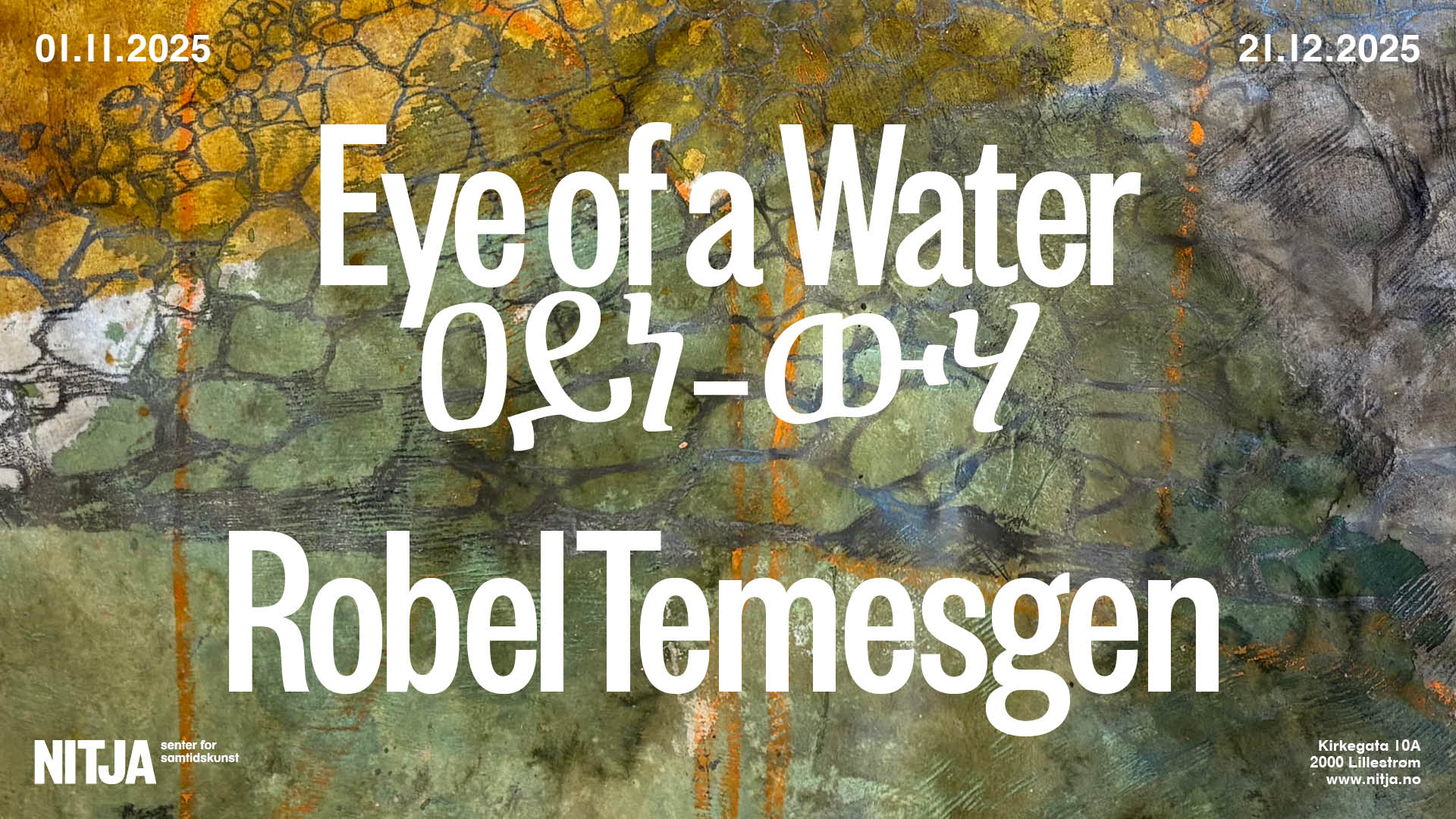


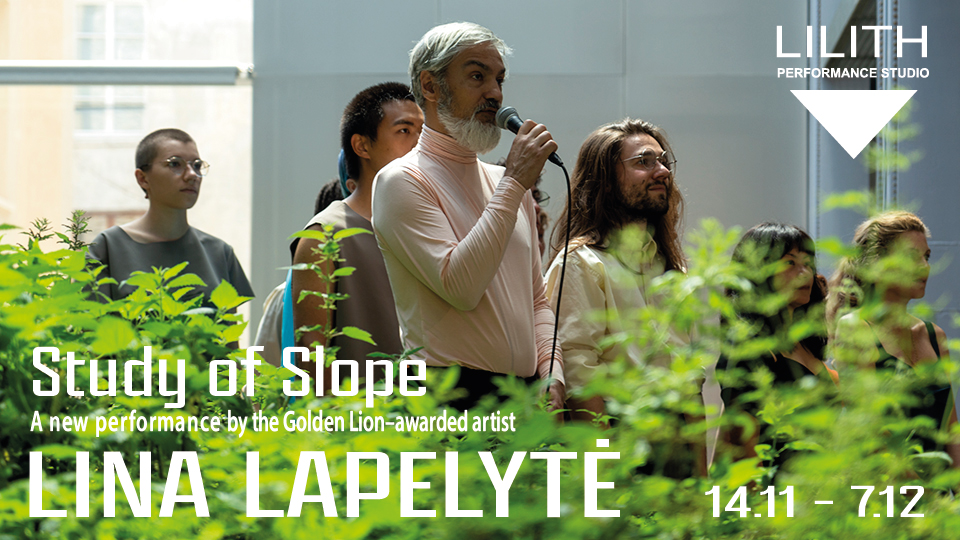
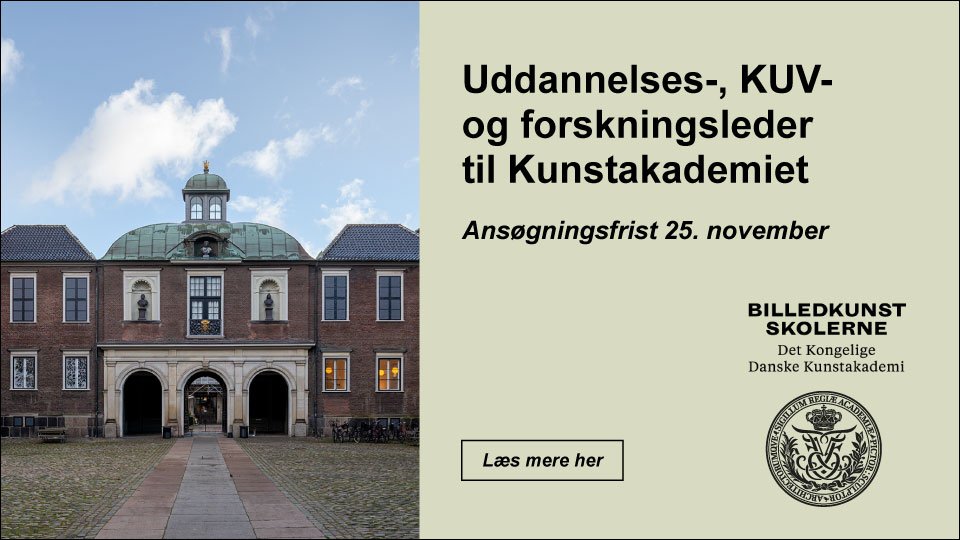
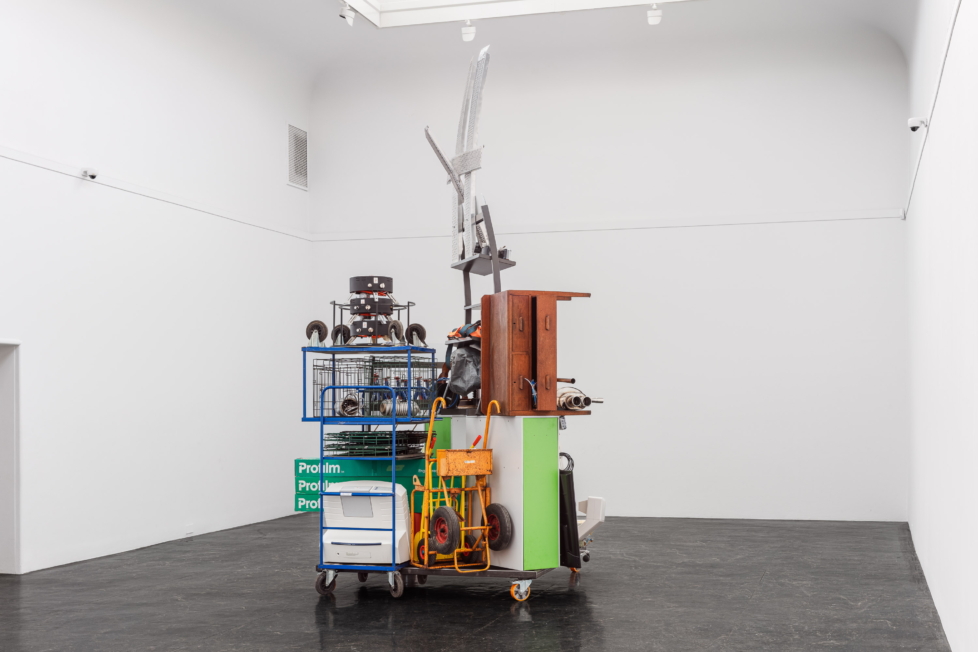
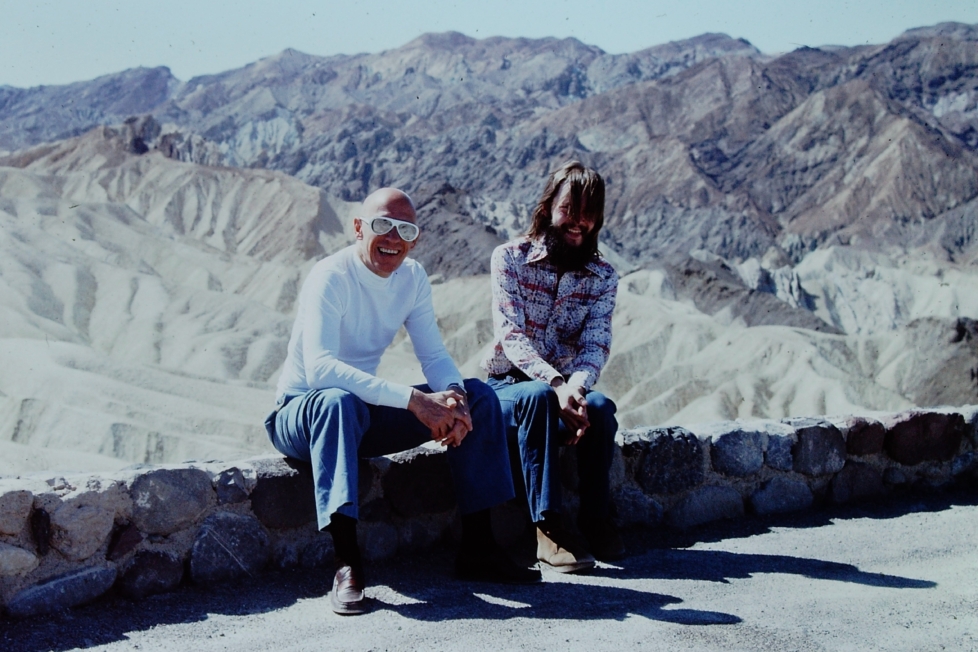
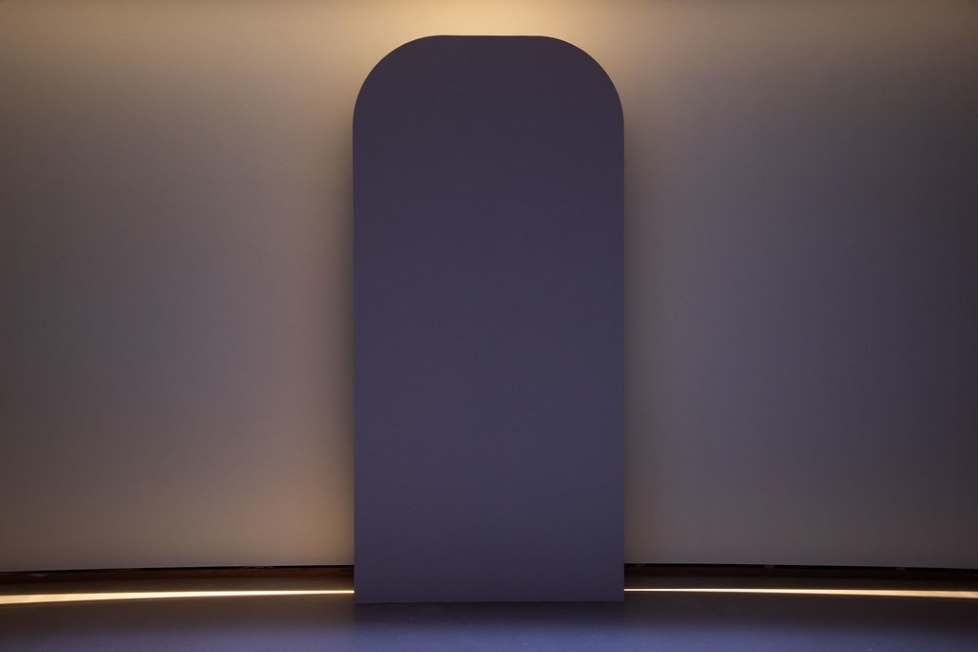
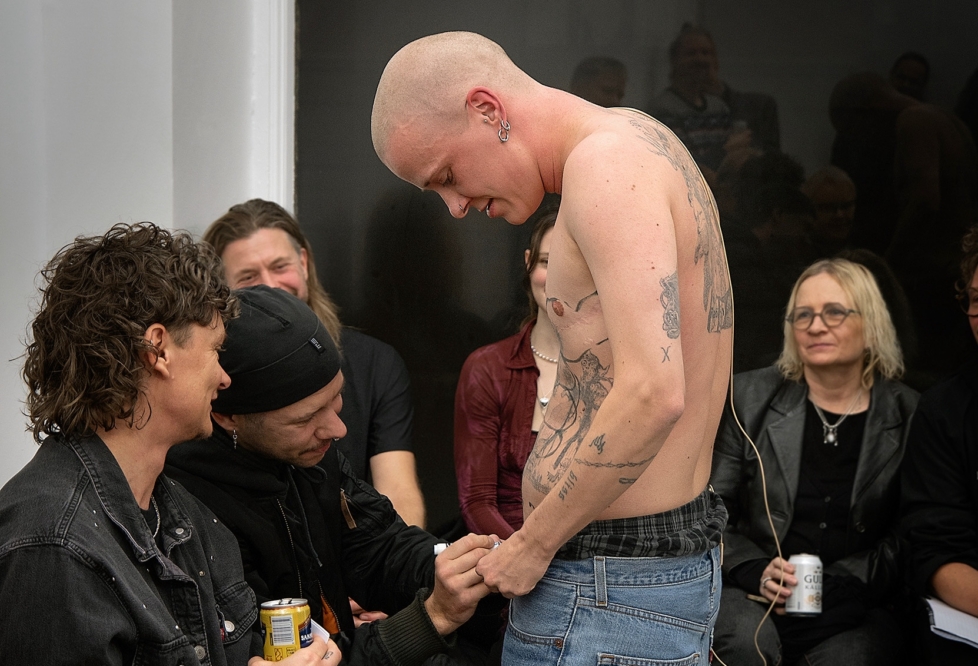
Diskussion